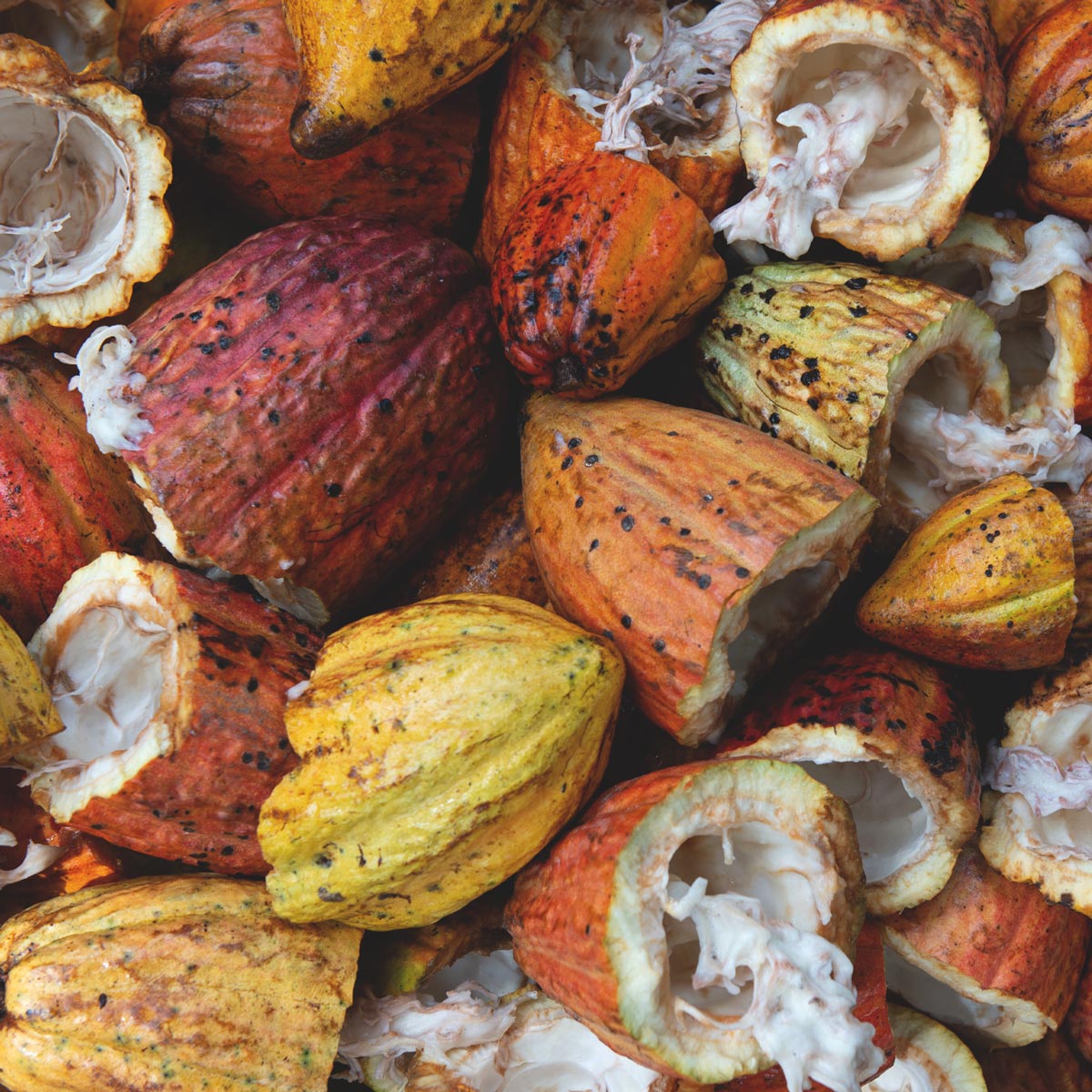History of Chocolate
History of Chocolate
We're just a tiny nib on the very end of the long, drizzling chocolate timeline. For now.
Since we’re basically brand new, there aren’t a lot of grandiose claims we can make with respect to the chocolate industry. Are we the biggest? Nope. The fanciest? Hardly. The best? We’ll leave that to you. Think of us as a small but sophisticated and decadent afterthought following the centuries-long, luscious history of chocolate — one traceable to ancient Maya, and some say even earlier to Mexico’s prehistoric Olmecs.
Truth be told, the actual source of chocolate’s invention is a little thick and gooey, but traces of theobromine, the stimulant found in chocolate, have been discovered in ancient vessels dating back to around 1500 B.C. The Maya revered chocolate (not unlike your average red-blooded American female) and, well, you already know how the Aztecs felt about it.
If this is Montezuma’s revenge, bring it on!
Aztec chocolate, otherwise known as xocolatl, was reserved for the upper class, and an extravagance even to them. Except for the Aztec ruler Montezuma II. Under the guise of a search for energy or aphrodisiac, Monte supposedly consumed gallons of xocolatl on a daily basis. Seems like a bit of a stretch to us because consuming gallons of anything every day would certainly have to number your days. Although we hasten to admit, that kind of habit makes being Montezuma sounds pretty awesome.
Thankfully, the world wasn’t flat after all.
Theories about chocolate’s arrival in Europe abound, but one hypothesis is that Christopher Columbus, on one of his journey’s to the new world, intercepted a trade ship carrying cacao beans as part of their cargo, which he then brought back to Spain in 1502. If true, one might have to consider this discovery as a rival on par with the discovery of the new world itself.

HERNAN CORTEZ, SPANISH CONQUISTADOR, MEETING AZTEC EMPEROR, MONTEZUMA II.
Perhaps giving credit for two equally world-altering achievements to a single person is a bit far fetched. Thus, we support an alternate yarn — one that claims that, after conquering the Aztecs and claiming Mexico on behalf of his native country, it was Spanish conquistador Hernán Cortez who introduced Spain to the wonders of cacao.
In the end, the precise events that unfolded to bring cacao to Europe aren’t important. What really matters is that, eventually, all of Europe was consumed by… consuming chocolate. Soon, plantations were sprinkled across the continent, and chocolate varieties evolved and expanded to suit the palates of European aristocracy.
Should it have been called the “Boston Chocolate Party?”
When America was colonized, naturally, chocolate came along for the ride, and Boston was the locale of the first American chocolate house. We wonder if the crown would have been more upset, and perhaps fought more vigorously, had we dumped their chocolate into the Boston harbor. Such a heretical move may have proven far more motivating to the British and we may have never gained our independence.
Tea it was, though. Still, chocolate played a roll during the Revolutionary War, as it was sometimes given to soldiers as payment instead of money. If that doesn’t illustrate the value of chocolate, we’re not sure what would.
Thoroughly modern chocolate… or something like that.
Today, chocolate is largely mass produced, but there are also master chocolatiers that fashion their creations by hand, using unique recipes and often laborious processes, from ingredients that are pure and of extraordinarily high quality. At Heavens to Betsy, we like to think we sort of belong to this latter group.

FORTUNATO NO. 4, 100% NACIONAL CACAO FROM PERU’S MARANON CANYON, THE SOLE PROVIDER OF CACAO TO HEAVENS TO BETSY.
Like fine chocolate makers, we use only the highest quality ingredients, selected for their purity and flavor. What’s more, the specific dark chocolate that goes into Heavens to Betsy — Fortunato No. 4 — is 99.99% pure Nacional, and is ethically and sustainably sourced from Peru’s Marañón Canyon, a region known for the world’s finest cacao, and where its farmers are paid 100% cash, up front, at a rate that’s 50% above the local bean price. Thus, although there are costs associated with this modern approach to production, we are, like Fortunato No. 4, committed to providing a product that respects Mother Earth, as well as the hard work of everyone involved.
What people are saying:






